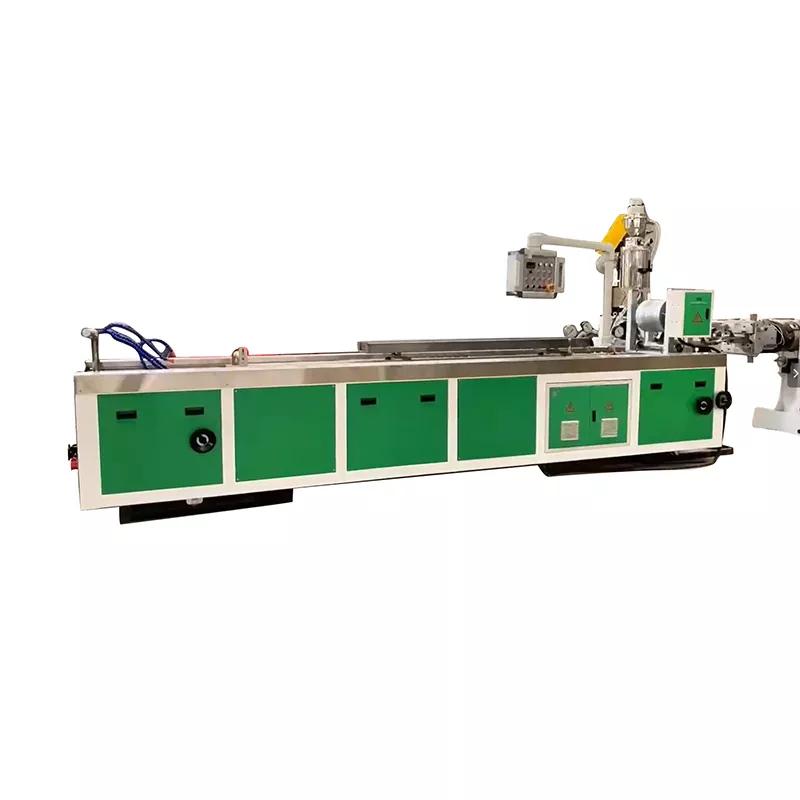A Guide to Plastic Profile Equipment: Functionality and Benefits
2024-12-11
Plastic profiles play a crucial role in various industries, from construction and automotive to furniture and packaging. Behind the production of these versatile plastic components lies specialized machinery known as plastic profile equipment. This blog explores what plastic profile equipment is, how it works, and why it’s an essential tool in modern manufacturing.

What is Plastic Profile Equipment?
Plastic profile equipment refers to a set of machines designed to produce continuous lengths of plastic with a specific cross-sectional shape, known as profiles. These profiles can take many forms, such as tubes, channels, rods, or custom designs tailored to specific applications.
Core Components of Plastic Profile Equipment
1. Extruder
- The heart of the process, where raw plastic materials (usually pellets or powder) are melted and mixed.
- A rotating screw pushes the molten plastic through a die to shape the material into the desired profile.
2. Die Head
- This component gives the plastic its final shape by forcing it through a custom-designed opening.
- Precision in die design ensures consistency in profile dimensions.
3. Calibration and Cooling Unit
- The extruded plastic passes through a calibration unit to maintain shape and size.
- Cooling tanks or air systems solidify the plastic, locking in the profile.
4. Haul-Off System
- A pulling mechanism ensures the profile moves steadily through the equipment without stretching or deformation.
5. Cutting Unit
- For profiles that require specific lengths, cutting units slice the material with precision.
6. Control Systems
- Advanced equipment comes with digital controls for temperature, speed, and pressure, ensuring consistent quality and production efficiency.
Key Features of Plastic Profile Equipment
1. Material Versatility
- Compatible with a wide range of thermoplastics, such as PVC, PE, PP, ABS, and polycarbonate.
- Allows for the creation of profiles with diverse properties, including flexibility, durability, or UV resistance.
2. Customizable Designs
- Equipment can be tailored to produce complex or unique shapes, meeting industry-specific needs.
3. High Production Efficiency
- Continuous operation ensures consistent output, making it ideal for large-scale production.
4. Energy Efficiency
- Modern machines incorporate energy-saving technologies, reducing operational costs and environmental impact.
5. Durable Construction
- Built to withstand high temperatures and prolonged use, ensuring long-term reliability.
Applications of Plastic Profile Equipment
1. Construction Industry
- Produces window frames, door seals, and cable conduits.
2. Automotive Sector
- Used for trim strips, bumper strips, and interior decorative profiles.
3. Furniture Manufacturing
- Creates edging strips, handles, and protective profiles.
4. Electrical and Telecommunication
- Makes cable channels, wire covers, and insulation profiles.
5. Retail and Packaging
- Develops shelf edging, display holders, and packaging components.
Advantages of Using Plastic Profile Equipment
1. Precision and Consistency
- Ensures every profile meets exact specifications, crucial for industries where uniformity is essential.
2. Cost-Effective Production
- High-speed production reduces costs, especially for bulk orders.
3. Eco-Friendly Options
- Many machines support recycled materials, promoting sustainability.
4. Wide Range of Applications
- From simple tubing to intricate designs, the versatility of the equipment allows for diverse uses.
Future Trends in Plastic Profile Equipment
With advancements in technology, plastic profile equipment continues to evolve. Expect innovations like:
- Smart Machines: Integration of IoT for real-time monitoring and predictive maintenance.
- Energy Optimization: Enhanced systems to reduce power consumption.
- Recycling Integration: Machines capable of processing more recycled plastics efficiently.
Conclusion
Plastic profile equipment is a cornerstone of modern manufacturing, offering unmatched versatility, efficiency, and precision. Whether you’re in construction, automotive, or any other sector requiring plastic profiles, investing in the right equipment can elevate your production capabilities. By understanding the machinery’s components, features, and applications, businesses can make informed decisions and achieve superior results.
Would you like to explore specific machines or industry applications in greater detail? Let us know!


